|
|
ADDRESS AT THE FIRST CONVOCATION OF KING GEORGE'S MEDICAL UNIVERSITY, LUCKNOW
14-01-2005 : Lucknow
Towards a disease free India?
I am delighted to participate in the first Convocation of King George?s Medical University, Lucknow in the centenary year. I congratulate all the under-graduate and post-graduate students for their academic performance and the faculty members for shaping the young minds. My greetings to the chancellor, vice-chancellor, faculty members, medical experts, scientists, technologists, government functionaries and distinguished guests. I understand that during the last century the University has generated more than fifteen thousand medical professionals who are playing a key role in providing quality medicare to the needy patients in different parts of the world. The University is now capable of imparting medical education annually for over 300 students. My greetings to all of you.
Mission of Medical community
Dear friends, when I am in the midst of the medical community, I am reminded of the famous statement by Norman Cousins in his book ?Anatomy of the illness? Patients are today reaching out to the doctor not just for medical help. They are reaching out for kindness, assurance and hope. I would also like to share with you a quote in the paper which I came across on the topic ?One World, one people, one surgery? by Dr.T.E.Udwadia which states: ?The poorest of the poor have as much right as anyone to less pain after surgery, reduced medication, less morbidity, shorter hospitalization, and early return to home, family, and work. Minimal access surgery and the expensive technology it requires are advocated, not as homage or tribute to new technology, but in appreciation of the manifold benefits this new technology gives to our patients and our people.? This thought has to be the focus of all the graduates and post-graduates completing their medical studies and entering into a professional career from this University. My topic for discussion is ?Towards a disease free India??
First I would like to discuss some of the diseases pattern visible in certain tribal areas. I would like to share with you this information, show that you will see the clinical data and try to find out the solution.
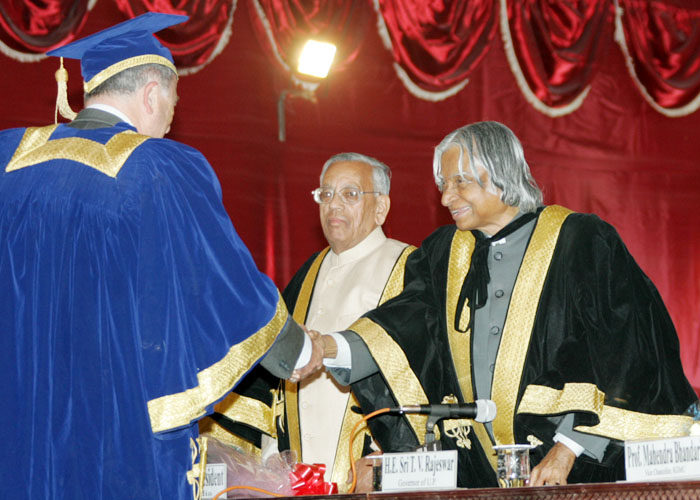

Treatment for Sickle Cell disease
Recently, when I visited Chattisgarh, I was informed by various authorities that sickle cell anemia disease is prevalent in tribal areas and even in the adjoining States including parts of UP. I understand over 25 lakh population suffers from this disease and large number of children dies every year due to complications caused by sickle cell disease among the mothers. Life expectancy of this population is quite low and it is reported that this disease is a silent killer. The Medical Researchers of India have to take up this task in all earnestness.
Dr. Kmiec had shown that the new gene repair technology may hold promise as a treatment for sickle cell anemia and other diseases by correcting the DNA mutation from which they arise.
Sickle cell disease is an inherited condition. Two genes for the sickle hemoglobin must be inherited from one's parents in order to have the disease. A person who receives a gene for sickle cell disease from one parent and a normal gene from the other has a condition called sickle cell trait. Sickle cell trait produces no symptoms or problems for most people. Sickle cell disease can neither be contracted nor passed on to another person. The severity of sickle cell disease varies tremendously. Some people with sickle cell disease lead lives that are nearly normal. Others are less fortunate, and can suffer from a variety of complications. Some of the common symptoms seen in the patients suffering from sickle cell anemia include i) anemia ii) intermittent jaundice iii) severe joint pains iv) recurrent infections. These symptoms appear between the ages of four and five and severity increases with advancement of age. The available treatment strategies can be divided into anti-sickling agents, vasoactive drugs bone marrow transplantation and gene therapy. During my visit to Chattisgarh, I found this disease prevalent in tribal areas and I would recommend the members of King George Medical University to apply their mind collectively to find preventive and post-occurrence cost effective treatment for this dreaded disease. Since some of the graduates and post-graduates may seek employment in rural areas I would suggest they can take special care in treating patients having sickle cell disease. Now, I would like to discuss multi-dimensional solutions for the treatment of Coronary Artery Disease.
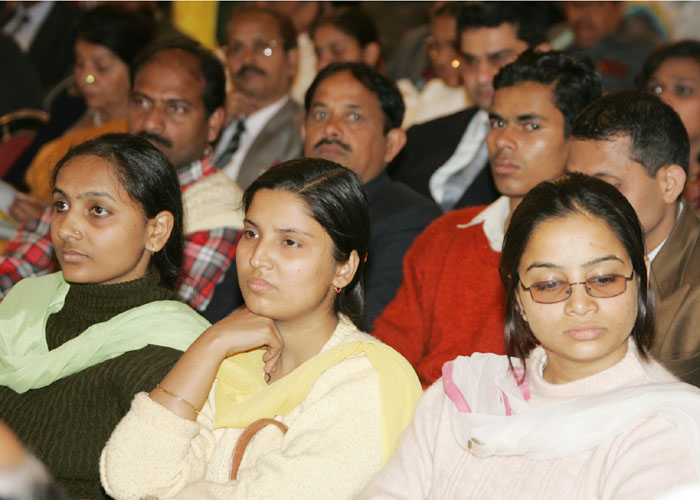

Coronary Artery Disease profile
As per one of the studies, only 8% of the world population has access to heart surgery delivery systems. Out of the 6.5 lakh surgeries taking place in a year, 4.5 lakhs are performed in USA alone, only 2 lakhs are performed in the rest of the world. In India fifty to sixty thousand operations are performed every year, whereas possibly 2.5 million people may need heart operations in India. Another observation is that the occurrence of coronary artery diseases in India is taking place between the age group of 35 and 55, whereas in the western world, it generally occurs after 55 or 60. The main reason for this in India is attributed to the urban life style and intake of rich food having high cholesterol. It is also found that the occurrence of cardiovascular cases is 4% in rural area as against the 10% found in big cities in India. Whereas the world statistics says that the incidence is only 3 to 4%. A research is essential for establishing the reasons for occurrence of heart ailments among Indians at a young age and also the reduced occurrence of the disease in rural areas. The results of the study will assist in national planning for combating the heart ailment.
This also shows that the urban life and the facilities come at the cost of deteriorated environment detrimental to one?s heart and life. The PURA- Providing Urban amenities in Rural Areas ? would overcome this draw back and establish that the Urban comforts can be brought to the rural areas without the drawbacks associated with the rural life styles.
Characteristics of the Indian Population: It is reported that Indians are genetically more vulnerable to heart attacks wherever they are than Americans and Europeans. My Doctor friends say, Rheumatic heart disease, which leads to heart valve destruction, is peculiar to the Indian community. This arises out of poverty and poor socio-hygienic living conditions of our population, which results into rheumatic fever in young age, leading to one in every thousand child suffering from Rheumatic heart ailments in later years. You may like to discuss this situation and possible solution in the university. In India over hundred and fifty thousand children are born with congenital heart diseases every year. Out of these 85% of them have risk of life before any treatment reaches them, approximately 40% could be saved if timely diagnosis and proper pre-operative preparation of the child is done. Pre-operative preparation and the surgical intervention are time sensitive and vary with the time of detection of the ailment. Due to lack of timely detection, Medicare not reaching the children leads to high rate of mortality. With the present estimates only one percent of the 1.5 lakh children are saved after proper medical intervention. I would suggest the remedy for this situation lies in screening and detection of existence of rheumatic heart ailment in the child, right at the birth, so that the parents can be advised about the state of the child, when he or she leaves the hospital. I was told this type of screening is presently available only in big hospitals like AIIMS, Narayana Hrudayalaya and other few big healthcare centres. I would suggest that it can become a routine medical practice in Kings George Medical Hospital also.
The health care study 2020 has given possible diagnostic, preventive methodology with focus on early and periodical diagnosis, improvement in socio-hygienic conditions and better nutrition including pre-natal nutrition. We are now witnessing treatment of coronary artery disease moving from very invasive to less invasive methods. In the seventies bypass surgery was the big news, in the eighties it was balloon angioplasty and in the nineties it was the stented angioplasty.
Now, moving a step further is a totally non-invasive treatment - External Counter Pulsation (ECP), a truly non-operative, non-pharmaceutical, safe and effective treatment. ECP is Food and Drug Administration (FDA) (USA) approved and finds reference in medical and cardiology textbooks. Many articles have been published in a number of specialist Journals worldwide on this subject. The success of ECP can be judged from the fact that in USA the insurance sector reported that the reimbursement for ECP has gone up by 6 % whereas that of other procedure like angioplasty, bypass surgery, etc. has come down by 7%. Now the treatment is available in most of the leading hospitals of the world.
In India, ECP is available at Sibia Medical Centre, Ludhiana besides Escorts Heart Institute and Research Centre, New Delhi, Peoples General Hospital, Bhopal, Jamnagar etc.
It is well known that following bypass surgery - only 75% patients are symptom free for 5 years or more and only 50% after 10 years or more. The number of patients having recurrence after bypass, ballooning and stenting is increasing and for them ECP is the only FDA approved treatment available which is documented to increase the blood supply to the heart by 20-42%, to the brain by 22-26% and to the kidneys by 19%. ECP also increases heart's output. More patients now prefer non-invasive treatments. With improved cerebral circulation patients may notice improved memory, etc. Graduates and Post-graduates from this Institute may consider effective application of ECP as a treatment for heart care.
The King George Medical University can study the various treatments for cardiac diseases available including ECP and suggest through a research paper the choice of treatment with reference to the disease pattern.
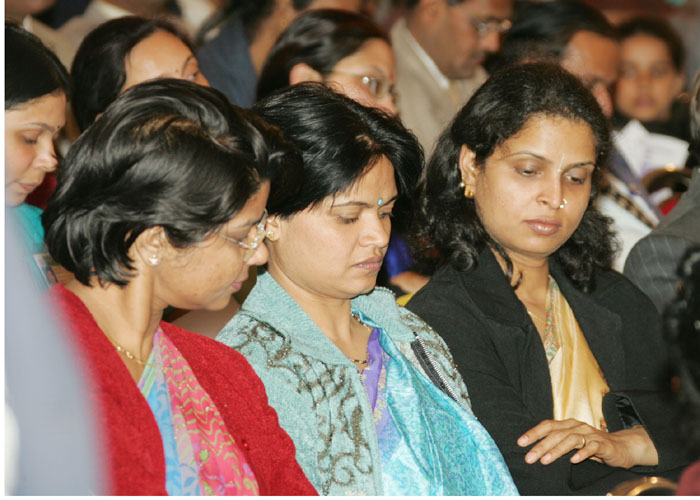

Life style intervention:Treatment method
There is a need to propagate the importance of appropriate food habit and life style among the urban population to combat the situation of increased occurrence of heart ailment. Hospitals in the country should take proactive steps to counsel their clients in a family atmosphere for ensuring reduction in this number in the years to come. Another feature which has been noticed is that there is a competition, between cardiologists and surgeons in treating heart cases. The ideal practice should be to provide only the minimum essential treatment instead of going in for surgical intervention as a routine management of the disease.
It has been reported that the repeated occurrence of heart ailments is caused by diet, smoking, lack of exercise and uncontrolled diabetes. These factors can be controlled by an appropriate life style intervention. I have seen the change of life style pattern practically taking place in Global Hospital and Research Center, Mount Abu. There was a joint project of Defence Institute of Physiology and Allied Sciences (DIPAS), DRDO and the Global Hospital and Research Center for studying the effect of "holistic lifestyle intervention" on the patients suffering from Coronary Artery Diseases during the year 1997-98. The project involved both Control Group and the Experimental Group. The Control Group was subjected to conventional treatment whereas the Experimental Group was supported by an intervention involving low fat, high fiber vegetarian diet, aerobic exercises and meditation. This three-dimensional psycho-physiological mind-body approach in treating heart patients of the Experimental Group resulted in dissolution of angiographic plaque and improvement in microcirculation of blood in heart muscles of the patients. The treatment was also supported by participation of spouses and other family members of the patients, leading to a unique family system approach to Medicare. These results of three dimensional approach to counter cardiac diseases should be discussed in the medical college lecture forum and seminars and a scientific view can be taken and propagated.
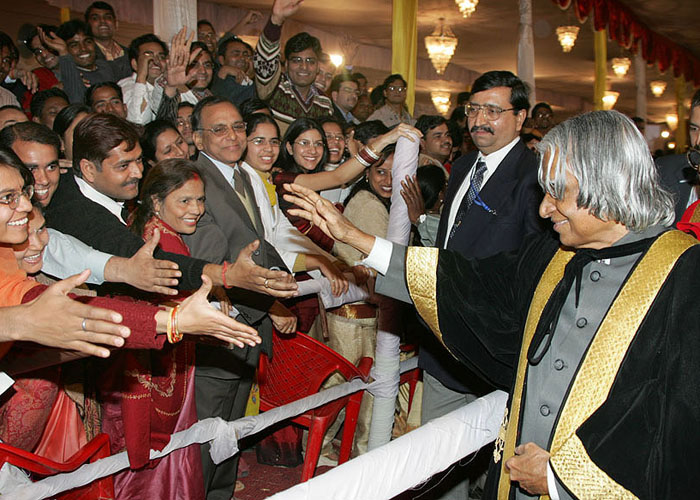

Allergic diseases:Possible solutions
In the treatment of both rhinitis and asthma treating the underlying inflammation is crucial along with relief of symptoms. I understand drugs like inhaled or intranasal steroids are crucial to controlling the inflammation and disease progression. These drugs have been proved to be safe and usage of appropriate controlled medication would prevent long term economic costs and morbidity. One should think of both immediate as well as long term implications of the treatment regime. The definition of recovery in these allergic diseases varies. Can we call the temporary relief as cure? This needs to be discussed by the medical community. I have also seen in a Pharma industry, development of new drugs from molecules which will provide better cure for inflammatory diseases. When the graduates enter into their profession this information will be of use.
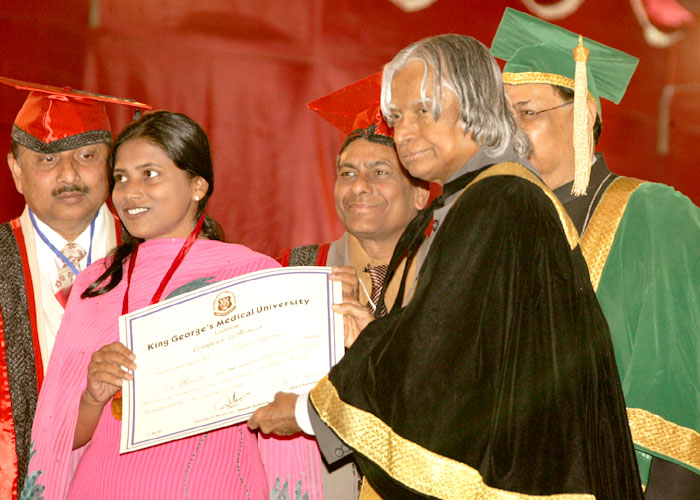

Networking the Medical Scientists
I have seen the website of the alumni of King George Medical University. This can become a common platform for providing connectivity amongst thousands of medical professionals particularly the alumni of King George Medical University practicing in different parts of the world. The website can document the case studies and special treatment regimes followed by different specialists and also the novel diagnostic techniques used by them for treating many diseases. You could also include provision for the common man to ask questions about his specific problems connected with his disease which can be answered by a panel of specialist doctors belonging to King George Medical Community. This will lead to automatic generation of a database of such patients and make treatment of these diseases available by specialists at an affordable cost. However, the confidentiality and anonymity of the patient has to be maintained by the website. This website can be used for creating awareness regarding various diseases, their symptoms and the appropriate time when the patient consults a specialist doctor. You can also extend the services of the Doctors and the students to the rural areas of Uttar Pradesh, through tele-medicine in number of rural centres and mobile tele-medicine clinics to the rural villages on a scheduled date and time periodically. This will be a great service provided by the 15,000 alumni, Staff and students of this University to the needy. This is all the more possible in view of the availability of EDUSAT and its connectivity for hundred thousand locations including the rural areas. The University may request the Indian Space Research Organisation (ISRO) to give them connectivity for medical education and training.

Polio free UP
As you all know, India is committed to 100% eradication of polio cases by the year 2005. One of the two states controlling the happening of this event is Uttar Pradesh. Hence, it is essential that the scientific and medical members of King George University should work in collaboration with the Polio eradication team of UP and take it as a mission to make UP polio free by the year 2005.
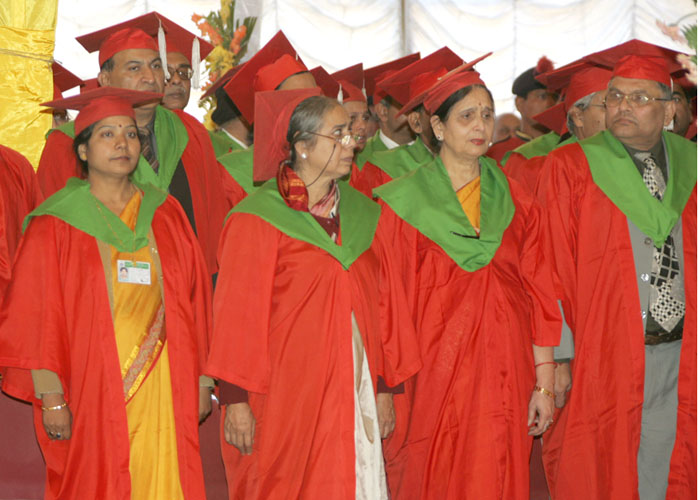

Conclusion
Medical profession is a noble profession and it has always been patient centric. The patient has the right to have right type of medical care, with right type of medical practitioners. How does a patient know, whether he should go to an ENT specialist, or an allergy specialist or a chest specialist? He is made to go from one place to another in search of the right specialists. An integrated mechanism is needed to see that patient without frustration is directed to the right specialist for right diagnosis at the right time at a right cost. The graduates and post-graduates of this University should keep this aspect in mind while practicing this noble profession in rural and urban areas of our country.
Dear Graduates, enriched with the knowledge provided by the King George Medical University, I am confident that you will succeed in the mission of removing the pain of the poor.
May God bless you.
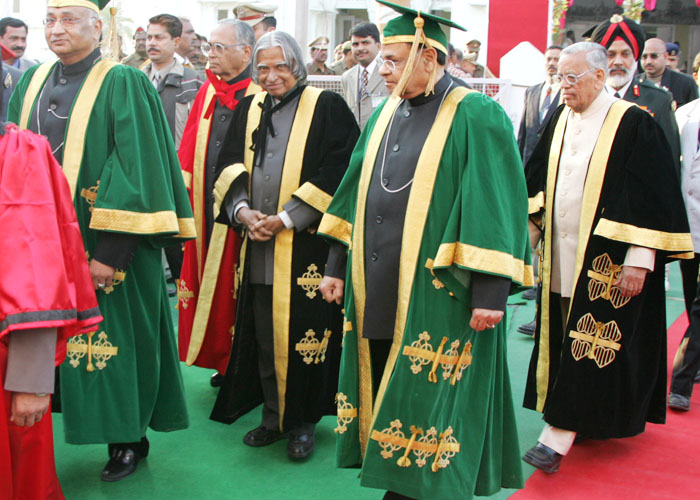
<<Back
|
|